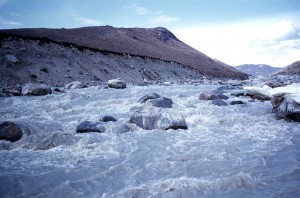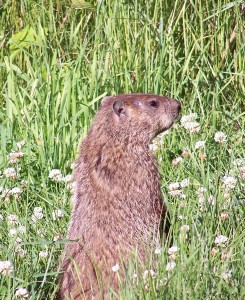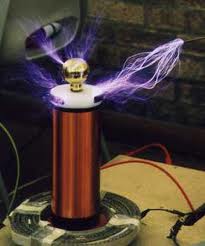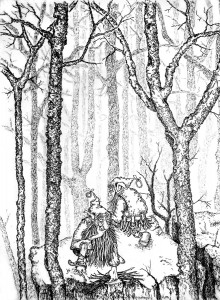Our Faithful Cherry Trees
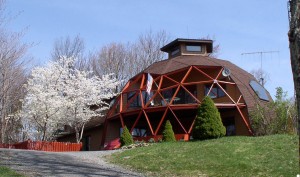 Our spring season probably hasn’t been much different from the rest of the northeast’s season. It came early after a not-so-snowy winter. Both the lack of snow storms and the early arrival of warm, sunny days mixed with enough rain was a blessing after some of the long winters of shoveling the car out, scraping it off, and worrying about the drive up and down the mountain. Not that our mountain road and driveway aren’t plowed – they are. Except on a rare occasion or two after an unusually heavy snowfall, we’ve had no problems, but it is nice to see spring arrive and its early arrival this year was a gift.
Our spring season probably hasn’t been much different from the rest of the northeast’s season. It came early after a not-so-snowy winter. Both the lack of snow storms and the early arrival of warm, sunny days mixed with enough rain was a blessing after some of the long winters of shoveling the car out, scraping it off, and worrying about the drive up and down the mountain. Not that our mountain road and driveway aren’t plowed – they are. Except on a rare occasion or two after an unusually heavy snowfall, we’ve had no problems, but it is nice to see spring arrive and its early arrival this year was a gift.
The daffodils and forsythia all bloomed, but our most prized flowers are our cherry blossoms. They have, at times in the past, barely begun to blossom when another snow storm would hit. This year they were out in all their glory, complete with full blossoms and hosting the happy bumble bees. The bees stay overhead, not bothering us as we sit beneath one of the trees which grows up in the middle of our deck.
Testing the Art Markets
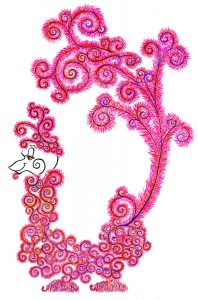 A few months ago I had 25 prints each made of eight pen and ink drawings. Am not quite sure why, although a few people had previously mentioned they would have bought an original except for the price. “Why don’t you get prints made?” some asked. “We could afford them.”
A few months ago I had 25 prints each made of eight pen and ink drawings. Am not quite sure why, although a few people had previously mentioned they would have bought an original except for the price. “Why don’t you get prints made?” some asked. “We could afford them.”
I debated. Where would I sell them except in our small local gallery? Is it a waste of money? Would they even sell, as they’re put in bins with dozens of other prints for people to paw through? What about the extra stock that I’d have store at home?
 Nevertheless, I had already scanned my drawings into high-resolution digital files, so I put them on my thumb drive and took them to a printer. I had the prints made. I bought mats, backing sheets, and large clear protective envelopes. I made labels and an advertising sheet showing thumbnails of all the drawings to slide in the back of the envelope. I worked out a price to include a reasonable profit once the gallery took out its 30%.
Nevertheless, I had already scanned my drawings into high-resolution digital files, so I put them on my thumb drive and took them to a printer. I had the prints made. I bought mats, backing sheets, and large clear protective envelopes. I made labels and an advertising sheet showing thumbnails of all the drawings to slide in the back of the envelope. I worked out a price to include a reasonable profit once the gallery took out its 30%.
“We only allow three prints per artist,” I was told at the gallery. I left three prints. I now had 197 prints along with the mats, backing, advertising sheets, labels and envelopes stacked up in our office. Bingo! I sold one print within a couple weeks and immediately replaced it with another! Now down to 196!
“You could sell them online,” my granddaughter Jennifer told me.
“But I really don’t want to market online and be packaging and mailing and waiting for checks to arrive.”
“No,” she explained. “Not for selling the ones you have at home. You can just upload those same digital files. The online company makes the prints and sells them.”
Adventures in Strange Lands
In 1954 I was working in Greenland at an Air Force base called Sondre Stromfjord. Built during World War II it was given the code designator “BLUIE WEST EIGHT or BW-8” The base was about a hundred miles up a long, deep fjord on the western (Baffin Bay) side of Greenland. The airstrip itself was on a long, flat rock at the bottom of the fjord with the river from the glacier running along one side. The glacier face was about a mile farther up the fjord from the airbase.
One day a trio of us engineers decided to follow the river up to the glacier face. Here the river of ice melt coming out from under the glacier was a very broad but shallow stream anywhere from a 2 ft deep torrent to a hundred foot wide, 2 inch deep trickle through a field of 6 inch boulders. In some places there were huge boulders which probably hadn’t moved in a thousand years.
Their surfaces were sculpted and carved into waves and potholes. All it took was a pebble or two spinning around in the current for, say, a hundred years and all of a sudden you had a pothole big enough for a man to hide in.
We worked our way slowly from boulder to gravel deposit marveling at how well the flow had so neatly sorted the surface into sand piles, half inch pebbles, 1 inch pebbles, 2 inch rocks, etc. Then we were on ice, maybe a foot or two thick with the river surging beneath us. We followed this ice path for maybe a quarter mile and came upon this amazing structure, a glacier cave.
‘What Do You Do All Winter?”
 “Winter solitude-
“Winter solitude-
in a world of one colour
the sound of the wind.”
Matsuo Basho
How many times have we been asked “What do you do all winter?” When people visit us or even hear that we live on top of a mountain with few neighbors, the first thing they focus on is winter. Yes, they agree, it must be beautiful in the summer and fall, but day after day of snow in the winter? “Do you get plowed out?” “Aren’t you bored?” “I could never be content up there!”
Frankly, I sometimes think winter should last longer. Not that I love the season – the cold, or feeling shut-in, or scraping off the car and driving up and down the 3-mile road; but we do love the solitude.
There is a privacy about it which no other season gives you…. In spring, summer and fall people sort of have an open season on each other; only in the winter, in the country, can you have longer, quiet stretches when you can savor belonging to yourself. ~Ruth Stout
During my first 8-10 years out here I was busy writing and illustrating books; one for each of my ten grandchildren. The Great Cavern of the Winds: Tales from Backbone Mountain was written and illustrated as the snow fell (and after). Other books, A Garden Full of Clouds; and a Christmas story, The Knight of Gnomes Knoll were written and illustrated for the family, plus Great-Nana Goes to Show and Tell, a sequel to Great-Nana Finds a Shoe, which I wrote years ago.
Yes, my winters have been full, mainly with writing and drawing. However, one year I wanted to take a break from those projects. I wanted to try something new––something really different. I wanted to use wood and tools. I wanted to build something by hand all by myself.
Morse Code: The original “texting”
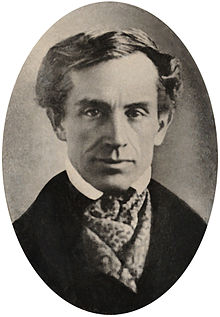
Samuel F.B. Morse
Morse code is a very strange type of communications. At first glance it appears as simply a substitution of dots and dashes for the letters of the alphabet. But then, as you get into it, Morse reveals all the twists and side tracks and inconsistencies of any foreign language. And, let me tell you from my own experience, if you don’t use it — you lose it! Just like any other foreign language.
International Morse evolved from the old railroad telegraph code now called American Morse. This was an extremely awkward code using simple instruments to give clicks and clacks at the beginning and ends of each dot and dash. But Samuel F. B. Morse and Alfred Vail made up for these deficiencies by using the very shortest sequences of dots and dashes for the letters most frequently found in English. So the letter E became one dot and the infrequent letter Q ended up as dash dash dot dash, and so on. This strategy turned out to be extremely efficient. It was fast and sort of self correcting. If a crash of static wiped out reception of a letter or two, and if you knew it was in English, then you could often guess from what you did hear and your knowledge of the English language just what had been messed up.
Meet Wood Charles
It’s February 2nd, also known as Groundhog Day. I personally put my faith into the groundhog’s predictions for the length of winter-like weather. Any animal which faithfully comes out of his burrow each year must have some knowledge of the season’s future, otherwise why would we, or he, even acknowledge his shadow, or lack thereof?
We hold no celebrations up here on the mountain, such as they do in Punxsutawney, Pennsylvania, which is the largest and most famous gathering of groundhog watchers. Their groundhog is called Phil (after King Phillip) and he’s been faithfully doing this job for over 125 years! No wonder he knows the correct forecast.
The groundhog is also known as the woodchuck. Why he’s called one thing in one place and another elsewhere raises some good questions. My theory is that many, many years ago there was a groundhog rebellion of some sort – maybe fighting over territory and boundaries, maybe a dispute in the weather forecast techniques, maybe vanity issues of who looked handsomer and spoke more eloquently when delivering the weather predictions; or maybe some groundhogs proposed that the name “woodchuck” was more elite sounding than “groundhog”. It was the “hog” ending that bothered them.
A DX-er’s Lament: There has to be a better way
Working DX can be really frustrating these days. Ham radio is supposed to be fun, talking to stations in far off parts of the world, using equipment you have built yourself, and so on! But sometimes contacting DX these days has evolved into a real mess. Let me describe how this has come about and maybe you can come up with a better system.
In the early days of ham radio we used spark transmitters which had no unique frequency to tune to. Just a BLAAAhhh of radio energy into the antenna whenever the key was pressed. The frequency of most of the spark’s energy was determined by the antenna size. Big antennas, 200 foot high and a half mile long, put out most of their energy on the lowest frequencies. These signals traveled many hundreds of miles. Hams were relegated to the higher frequencies which appeared to have much shorter range. This helped a little, but still there was a lot of interference between government stations and private stations and hams. If you were a ham living close to a government station, your weak signal could still knock his earphones off every time you pressed the key. Needless to say, tempers were short, fights were frequent. Things could get real ugly very quickly.
With the advent of the vacuum tube and the crystal oscillator, transmissions were confined to single, unique frequencies. Nice, clean dots and dashes. Your receiver could select the frequency you wanted to listen to and reject all the others. In those early days you would tune your receiver to his frequency and then call him on your (different) transmitter frequency. He would have to tune around looking for any station calling him. If many stations were calling him he might work two or three others before he got around to you. This is the way I worked ham radio from Alaska in 1948.
One of Winter’s Pleasures
 Winter on the mountain is beautiful after a snow. Everything is solid white; even our plowed road and driveway are white, unlike the streets in town or the highways which are sloppy and covered with dirt.
Winter on the mountain is beautiful after a snow. Everything is solid white; even our plowed road and driveway are white, unlike the streets in town or the highways which are sloppy and covered with dirt.
On sunny days we sometimes bundle up and go out for a walk, but most often, especially when it’s snowing, we’re content to stay inside. We just pour another cup of coffee and, if necessary, pick up the phone to cancel and reschedule appointments. Basically, we’re winter hermits, enjoying the uninterrupted time to work on our projects––Mark with his ham radio and I at my drawing board. We read, we talk, and every so often we make popcorn and settle down to a game of Scrabble.
 Oddly enough, one of our joys during the cold season is the warm bathroom. I don’t like to call it “the bathroom” because one pictures a little room with a sink, a shower/tub and a toilet. Ours is a big room, partitioned so that the toilet and sink have their own small cubicle, and the open shower and spa have the main part. Together they take up almost a quarter of the downstairs dome. Mark was tired of small shower stalls where he banged his elbows. I wanted a place to soak and look out at the snow, and with lots of room to “towel off”. The big spacious open “shower/spa” room appealed to us.
Oddly enough, one of our joys during the cold season is the warm bathroom. I don’t like to call it “the bathroom” because one pictures a little room with a sink, a shower/tub and a toilet. Ours is a big room, partitioned so that the toilet and sink have their own small cubicle, and the open shower and spa have the main part. Together they take up almost a quarter of the downstairs dome. Mark was tired of small shower stalls where he banged his elbows. I wanted a place to soak and look out at the snow, and with lots of room to “towel off”. The big spacious open “shower/spa” room appealed to us.
Almost all of my friends have their spas outdoors. It does sound so beautiful to be out under the stars or sitting in scalding water while the snow falls gently all around. But then one must shovel the path ahead of time (or on the way out – brrrrr). And after that there’s the climbing out part, putting the spa cover on, and racing naked back inside (or first rolling in the snow for the hearty souls).
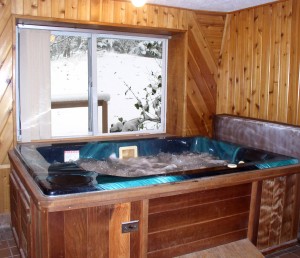 No shoveling a path, or racing through and over snow around here! We walk on our warm tile floor. Although the whole house has heated floors, we don’t walk around all day in bare feet. We do, of course, walk barefoot in the bathroom. No cold tiles for us. How good they feel in the middle of the night when we make a trip “down the hall”. How good they feel when we step into the shower and its floor is already pre-heated. How good they feel when we walk to the spa.
No shoveling a path, or racing through and over snow around here! We walk on our warm tile floor. Although the whole house has heated floors, we don’t walk around all day in bare feet. We do, of course, walk barefoot in the bathroom. No cold tiles for us. How good they feel in the middle of the night when we make a trip “down the hall”. How good they feel when we step into the shower and its floor is already pre-heated. How good they feel when we walk to the spa.
“We soak and see the beautiful snow through the window.”
Then, when we climb out, our feet once again hit the warm tiles. We leisurely put the spa cover back on and then dry off. Pure comfort! I sometimes wonder if we put in a fireplace and an easy chair if I would spend all winter in there.
If only we could just keep the tiles warm all summer!
Alaska Adventures: Getting Wheels
There are many little adventures that I barely remember about my ham radio and other activities in Alaska. Here are a few of them.

C-47 Skytrain (Wikipedia)
Charlie Bellman, whose call I think was W9KMH, was in charge of the motor pool. He and I had one good adventure. Now understand that no one had a private vehicle at all. If you wanted to go to Ft Richardson or Anchorage, some 20 miles away, you had to hitch a ride on a military truck — a very chancy thing!
Charlie wanted WHEELS!!!
One day he came back from Ft Richardson with a pair of big, fat, overstuffed wheels. These were the tailwheels of C-47 aircraft. I never found out just what he traded for them with some Air Force mechanics.
Charlie and I welded them together into a frame. Now we needed an engine. I managed to find a PE-75 portable generator that was declared “Unrepairable”. After all, how could it ever work since it was missing its nice, Briggs and Stratton 5 horsepower engine! Funny how that engine turned up later right under Charlie’s hand as he welded up the frame.
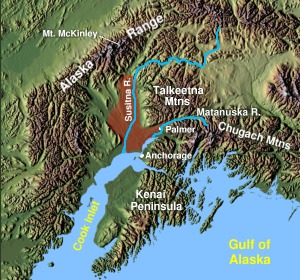
Matanuska-Susitna Valley, shaded in red, north of Anchorage, Alaska (Wikipedia)
The transmission was a pair of cone wheels with a belt between them, little end to big end and vice versa. I have no idea where they came from. No army vehicle used that type transmission. But it worked swell in our scooter.
Charlie and I drove up to the Matanuska Valley for the inaugural launch. Charlie in front steered and worked the gas pedal and I, clinging on behind him, worked the brakes (my shoes on the dirt road.). During the short growing season the Matanuska Valley was our main supply of fresh vegetables. With the fertile valley earth and the 24 hour sunshine, everything grew twice as fast.
The farmers who worked the fields had to obey the rules of the Homestead Act. They had to build a house on their 160 acres and live in it. But in 1948 all they would build was enough house to get them thru the winter. This consisted of an entrance door and steps leading down to a fully furnished basement. Downstairs was a living room/kitchen and a bedroom, but there was no sign of a house above ground. Only the stovepipe from the ubiquitous oil stove running on JP-1 jet fuel was visible in the winter.
The Forest “Folk”
“Stories of old tell that hundreds of years ago, small mountain folk inhabited the rocks and boulders of Backbone Mountain.” Denise Hillman Moynahan, The Great Cavern of the Winds: Tales from Backbone Mountain
After a busy summer and autumn I finally got back to my drawing board. It always feels good, except for the time spent staring at the blank sheet of paper; no different from the way writers feel when they have to write their first line, praying for some inspiration, praying for the perfect first line. My first line is in India ink. There’s no delete button once it’s drawn. But my paper doesn’t stay blank very long.
My studio looks down into the woodlands, into a world of boulders, rocks, and trees. I watch the ever changing scenery from season to season, from day to day; splashes of sunlight, falling leaves, moving shadows, frost, snow, mist and fog. I love the forest in the fog; the patterns of the tree trunks and branches emerging and hiding, their shades of gray getting lighter and lighter as they fade into the background. In fact it was on a foggy day ten years ago that I first saw some “small folk” while I was drawing the view from my studio window. I was almost finished when I looked out and saw two odd looking, small men sitting on the boulder that I was about to draw. They soon faded from my view––but not before I drew them!

